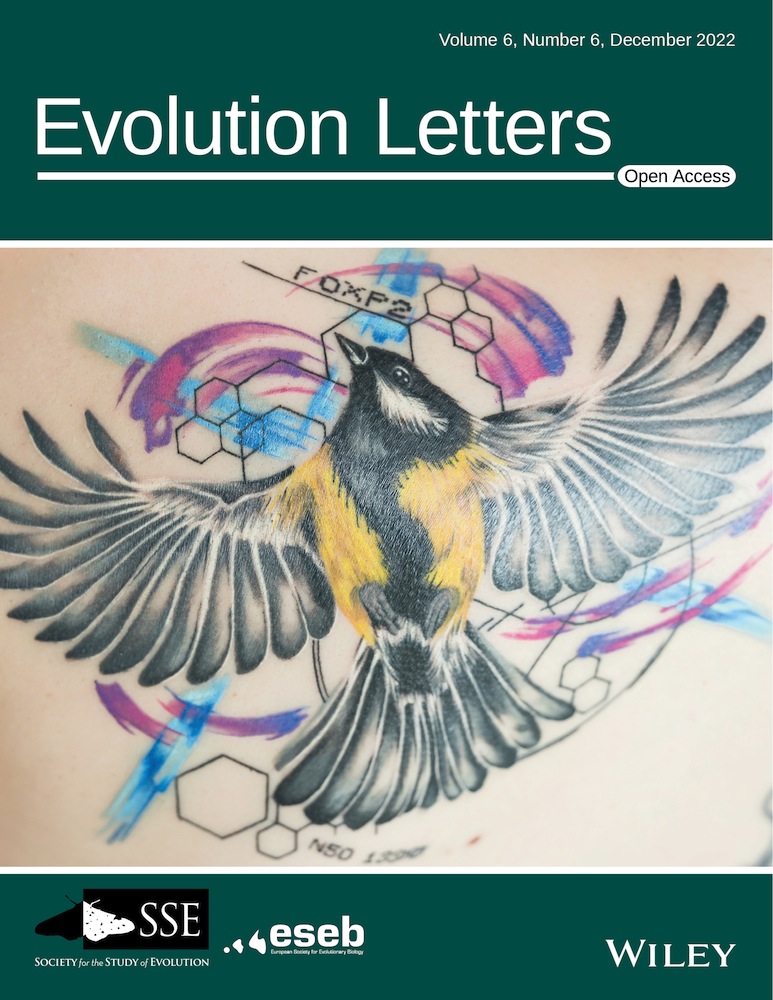在世界上最大的鸟类中,热剖面的遗传变异与繁殖成功有关
IF 3.7
1区 生物学
Q2 EVOLUTIONARY BIOLOGY
引用次数: 0
摘要
生活在极端热环境中的生物,如沙漠鸟类,已经进化出了惊人的适应能力,可以在炎热和寒冷的条件下调节体温。然而,我们对温度调节的选择和进化反应的潜力的了解是有限的,特别是对于经历极端温度波动的大型生物体。在这里,我们使用热成像来量化鸵鸟(Struthio camelus)的体温调节的选择和遗传变异,鸵鸟是世界上最大的鸟类物种,正在经历越来越不稳定的温度。我们发现,在更热的条件下,更善于调节头部温度(“体温调节能力”)的雌性有更高的产卵率。体温调节能力既可遗传,也显示出局部适应的特征:来自更不可预测气候的雌性在调节头部温度以应对温度波动方面做得更好。这些结果共同揭示了过去和现在的进化过程已经形成了温度调节能力的遗传变异,这似乎保护了关键器官,如大脑,在繁殖过程中免受极端温度的影响。本文章由计算机程序翻译,如有差异,请以英文原文为准。
Heritable variation in thermal profiles is associated with reproductive success in the world’s largest bird
Abstract Organisms inhabiting extreme thermal environments, such as desert birds, have evolved spectacular adaptations to thermoregulate during hot and cold conditions. However, our knowledge of selection for thermoregulation and the potential for evolutionary responses is limited, particularly for large organisms experiencing extreme temperature fluctuations. Here we use thermal imaging to quantify selection and genetic variation in thermoregulation in ostriches (Struthio camelus), the world’s largest bird species that is experiencing increasingly volatile temperatures. We found that females who are better at regulating their head temperatures (“thermoregulatory capacity”) had higher egg-laying rates under hotter conditions. Thermoregulatory capacity was both heritable and showed signatures of local adaptation: females originating from more unpredictable climates were better at regulating their head temperatures in response to temperature fluctuations. Together these results reveal that past and present evolutionary processes have shaped genetic variation in thermoregulatory capacity, which appears to protect critical organs, such as the brain, from extreme temperatures during reproduction.
求助全文
通过发布文献求助,成功后即可免费获取论文全文。
去求助
来源期刊

Evolution Letters
EVOLUTIONARY BIOLOGY-
CiteScore
13.00
自引率
2.00%
发文量
35
审稿时长
10 weeks
期刊介绍:
Evolution Letters publishes cutting-edge new research in all areas of Evolutionary Biology.
Available exclusively online, and entirely open access, Evolution Letters consists of Letters - original pieces of research which form the bulk of papers - and Comments and Opinion - a forum for highlighting timely new research ideas for the evolutionary community.
 求助内容:
求助内容: 应助结果提醒方式:
应助结果提醒方式:


